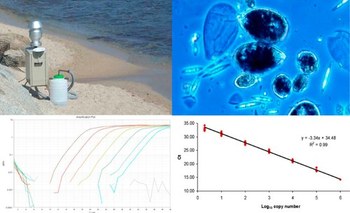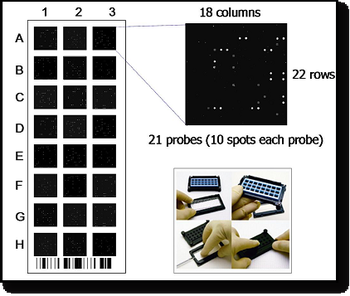Mattia Betti - Samuela Capellacci - Silvia Casabianca - Antonella Penna - Laura Pezzolesi - Rossella Pistocchi - Francesco Regoli - Mara Simonazzi

Biotechnological applications such as biochemical assays, biosensors, arrays, PCR assays, can help in ensuring a sustainable management of oceans and seas. High sensitivity, low detection limits, fast and easy analysis, low costs, miniaturization, automation and portability make their implementation interesting in the fish food safety and protection of the public health programs. The development of biosensors in the marine environment can help to manage aquaculture production areas, to understand phytoplankton dynamics, to study toxin transfer through food web, to identify risk areas, to predict coastal water quality and to assess impacts of climate change.
Various bioanalytical tools are developed for the detection of target analytes in aquaculture, fishery and marine monitoring. They are nucleic acid immobilization strategies, magnetic particle beads, miniaturized electrodes, DNA amplification techniques, multiplexing detection capabilities and signal amplification strategies. These assays, especially qPCR and micro-arrays, have been applied to coastal monitoring of toxic microalgae, to marine aerosol, to mussel farming products and to resting stages in marine sediments. The results have always provided qualitative-quantitative species-specific information in short time with a high degree of sensitivity even in complex matrices contributing to understand toxic microalgal bloom dynamics providing also early warning tools for contamination events.

In particular, knowledge of marine biodiversity is still limited. There is great variability in the distribution of species and taxonomic knowledge. The lack of experts in marine species taxonomy, duplicates/redundancies/inconsistencies of nucleotide sequences in databases, lack of holotypes and taxa poly-phylogeny generate errors or absence in the classification of species and strains which can have great potential for biotechnological applications. Therefore, resources, research efforts, time and cost-effective methods are needed to fill the current knowledge gap on biological and chemical diversity of marine ecosystems. These shortcomings can be addressed with high throughout put sequencing methods that facilitate the discovery, classification, ecological patterns and marine organism use. However, massive gene sequencing methods for biodiversity monitoring are not routinely adopted and the methodology for biodiscovery is often not standardized. Bioinformatic pipelines and big data analyses are changing the marine biotechnology scenario, as about 18,000 new species are discovered every year. This biodiversity assessment provides crucial information for the subsequent monitoring and exploitation of marine organisms. Furthermore, standardization of the biodiscovery process is necessary, because the chemo-diversity, even in the same taxa, varies greatly according to geographical and environmental gradients, as well as seasonally and in the life cycle of the organisms themselves.